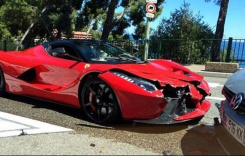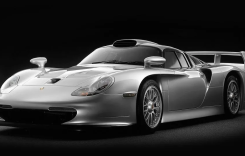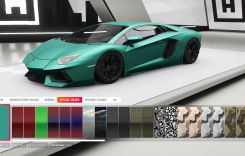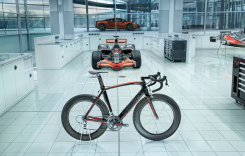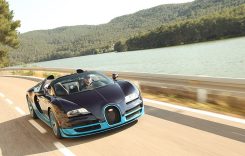This year’s AMA Supercross and Motocross racing seasons were good ones for Honda and the CRF250R. Justin Barcia and Eli Tomac both put the red Lites racer on the podium more often than not, and both earned championships on it. The one place it didn’t win was at our 2012 250 Motocross Shootout, where it came up short for the win by just two points. It just goes to show how closely matched these machines are.

Even with some new trophies in its case, Honda knows the only way to collect more is to not rest on its laurels. Sometimes small changes can pay big dividends, and for 2013 Honda didn’t totally revamp the CRF250R. Rather, Big Red tweaked the fuel injection settings and refined the suspension. That’s not a lot when other brands are touting such major changes for this year, but with all the work that went into the CRF last year, it was all Honda felt was needed.
The CRF250R in the past few years has had an easy to manage power output, but it never really set our hair on fire. For 2013 Honda updated the FI setting for more bottom- and mid-range punch as well as a crisper throttle response. Grabbing a handful out of Perris MX’s tighter corners
The Honda CRF250R’s engine is easy to control, but we wish it had a little more power on tap.
reveals that there is indeed a bit more on tap, but up top we are still wanting for more. It’s like the CRF starts strong but then just stops making power. It does make for a very controllable throttle when going fast, but when compared to the KTM, Kawasaki and Suzuki, there needs to be more. The engine is almost forgettable in this field; it’s not bad at all, but it’s also not great. It’s just middle of the road.
“During my first ride on the bike I didn’t like it,” says TLD’s Nate Verdugo. “The motor felt super soft and underpowered, but the more I rode the bike the better it felt. I realized I was clearing everything and over all felt really smooth on the bike.”
Nick Thiel adds, “I was actually a little disappointed with the Honda motor. It seemed to be a little flat on top with not too much bottom, although, the power delivery was super smooth and was easy to ride.”
On our Dynojet 250i the CRF’s engine output numbers confirm our on track assessments. A peak rear-wheel horsepower rating of 35.0 hits at 11,100 rpm and soon after the power drops off, while the monster motors of some of the other bikes in the test continue to build power. In the torque category, however, the Honda puts out a best in class 18.39 lb-ft, matching our seat of the pants feel that the CRF does have some good bark out of the corners. When the gate was dropped for the Holeshot Test the red racer smoked the field with a 4.127 second pass to 125 feet at 44.4 mph. It goes to show that easy to manage power can get the job done better when the conditions are less than perfect. In the Third-Gear Roll-On the results were less impressive with a second-slowest pass from 15 to 40 mph in 2.494 seconds over a distance of 97.4 feet.
While the CRF250R is still lacking a tad in the engine department, it absolutely shines in the chassis ratings. For 2013 Honda worked over the 48mm Showa front fork with a 2mm larger sub-piston for better front feel. The valving
The 2013 Honda CRF250R has the best suspension in the shootout and can handle big jumps as well as small chop.
was also revised for the fork and rear shock, and wow did it make a difference. Most of our testing crew chose the Honda as the bike with the best suspension. Whether in the whoops, on chewed up flat corners or on the biggest hits at Perris, the 2013 CRF250R eats up anything you can throw at it with its composed and controlled suspension action.
“The suspension on the Honda seems to work really well,” sums up Matt Armstrong. “It soaked up all the small chop and was very plush on hard landings. I think the suspension is one of the strong points on the Honda.”
Thanks to its excellent suspension, the CRF’s handling was also tops. Jump on the 229-pound Honda and within a couple of corners you feel completely at home. It’s the easiest to get on and go fast immediately. While other machines have quirks or traits we don’t like, there isn’t one area we can criticize on the red bike. It drops into corners without much effort and sticks like Velcro once it’s in. It may not be as sharp as the Suzuki, but there is zero twitchiness no matter the speed.
“The Honda has always been known for being able to corner and it of course carried over to this year’s model,” remarks Vicki Golden. “The rough ruts and the choppy flat corners were easy to get through, and I felt that I could let the bike do most of the work.”
Turning the 2013 Honda CRF250R is the easiest in the class with a light feel and superb stability.
Squeezing the binders on the CRF250R rewards the rider with a feel that is above average; the front brake gives exceptional feel when pushed deep into a braking zone. However, the power isn’t as strong as the KTM and has some squish from the front lever and rear pedal. We’d like to see a little firmer action from both ends for a more positive initial bite.
“The Honda had a great front brake and it gave great feedback under hard braking,” comments Chris See. “But I feel that the rear brake could be a lot stronger and it seemed to fade as the moto went on.”
The brakes may not be the best of the bunch, but the drivetrain is. This category was the most fractured in terms of views from our test riders, but when the votes were tallied the Honda comes out on top in a tie with the Suzuki RM-Z. The shift lever effort is easy and the shifts are always solid. Missed shifts are never an issue, but clutch fade can be after a flogging.
Thanks to its excellent chassis the 2013 CRF250R ties for first.
“The Honda was solid but had a bit of fade after a few laps,” admits Thiel. “ It’s not really surprising, this is usually one of my only complaints for the CRF every year.”
When it comes time to get some work done behind the bars, the layout on the CRF is one of the best. The reach to the bars is spot-on for any sized rider and the footpeg to seat distance is compact but not cramped. The only real complaint we have is that the seat could be a little more flat for quicker movement front to back.
“The Honda was really close on feeling the best,” See testifies. “But if I had to pick out one thing to criticize, it would have to be that I wish the seat was a little more flat so I didn’t really feel like I was sitting in so deep in the bike.”
Despite lacking some in the engine department the Honda was able to turn the third-fastest lap in our Super Lap testing with a 1:22.3 average lap thanks to its excellent handling.

